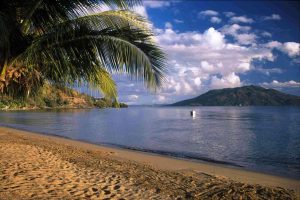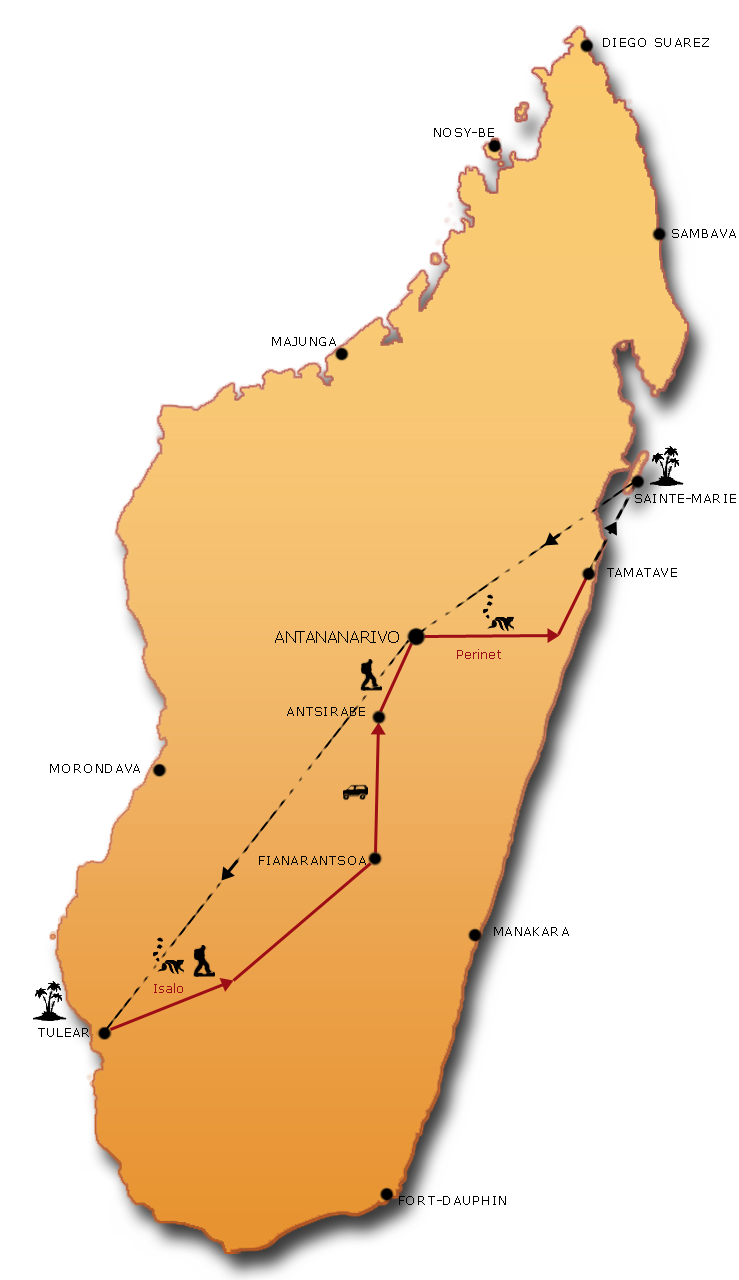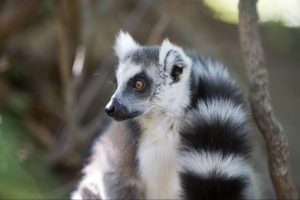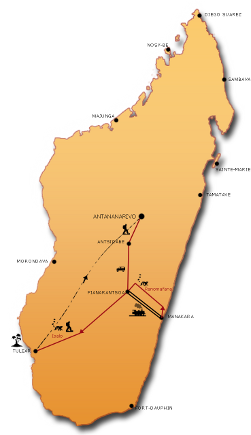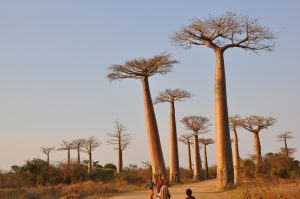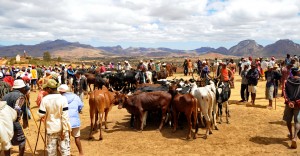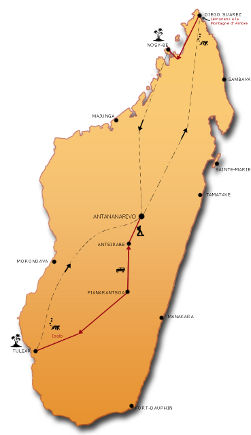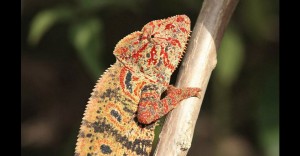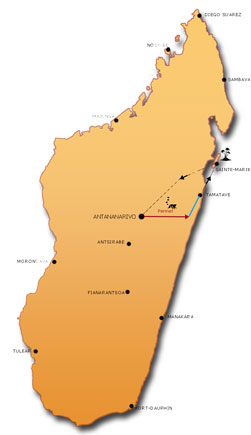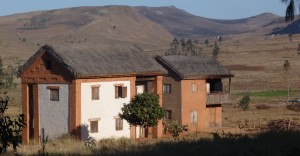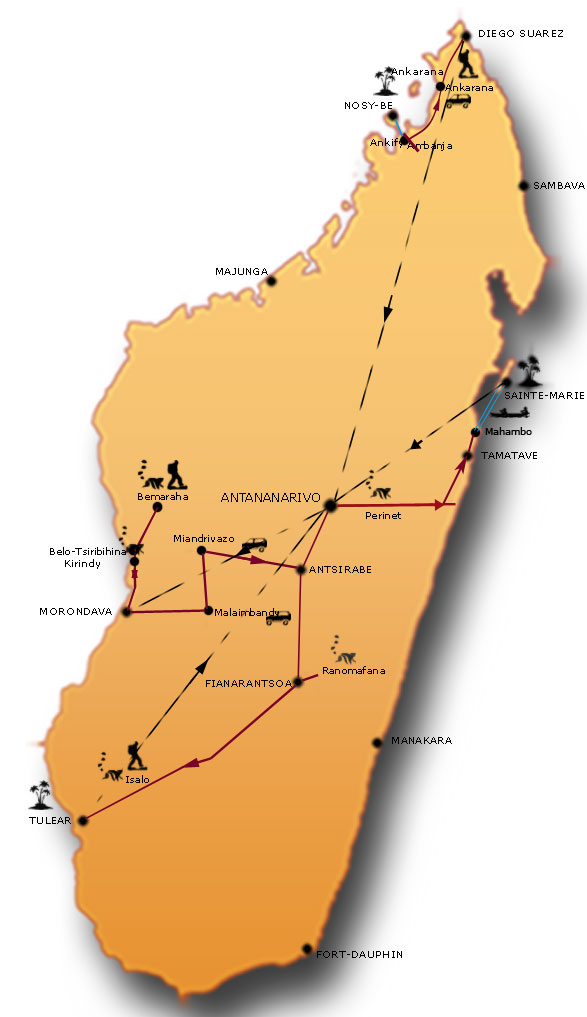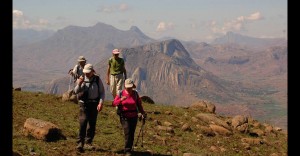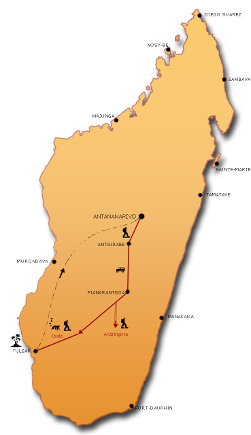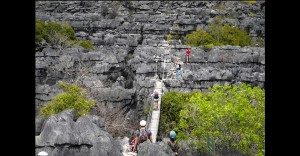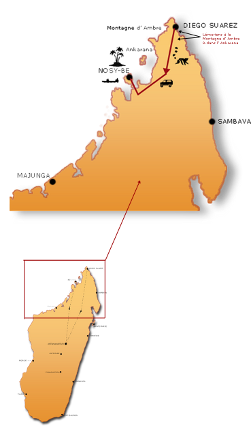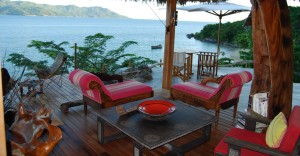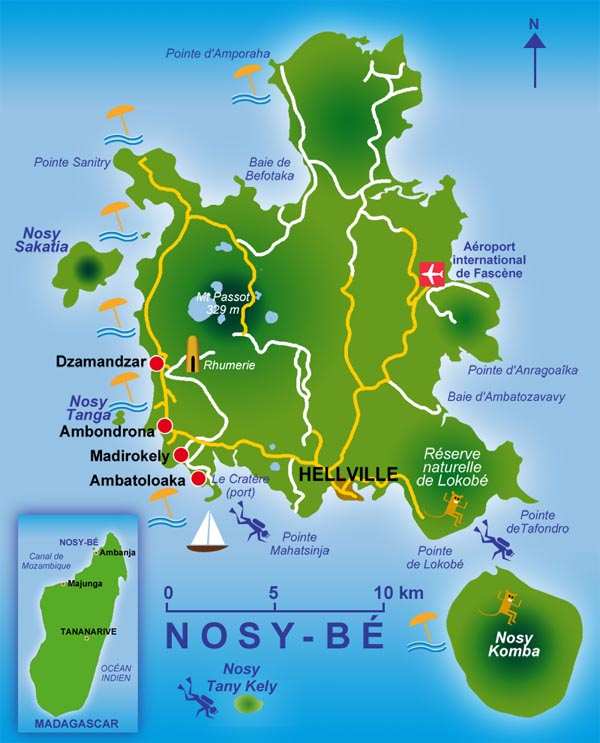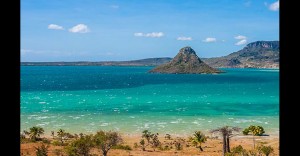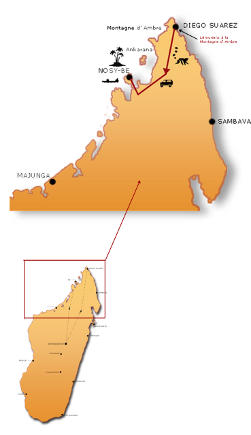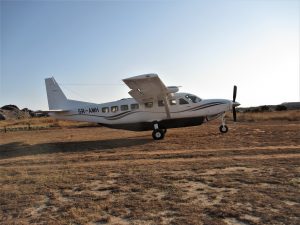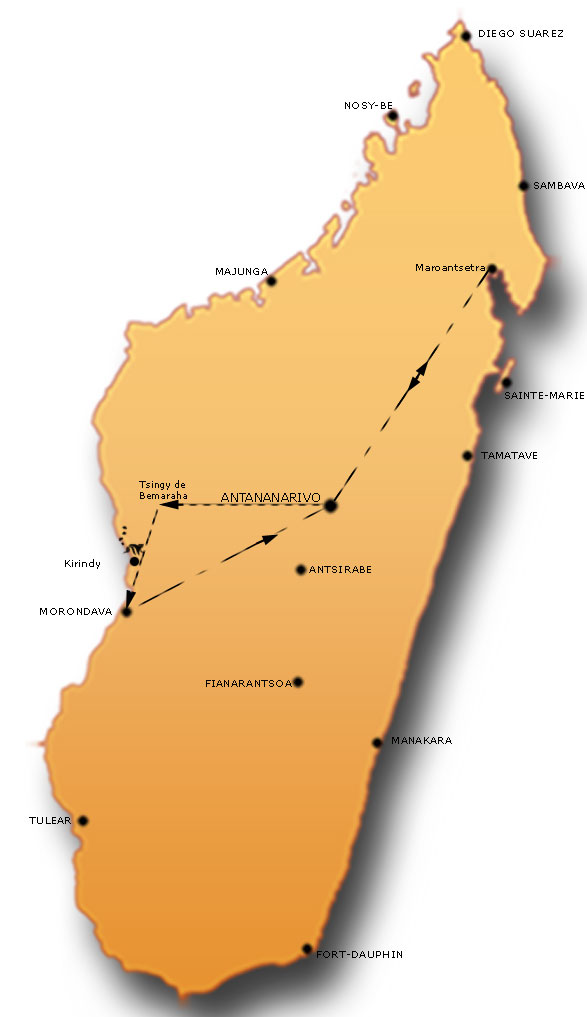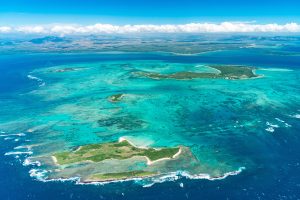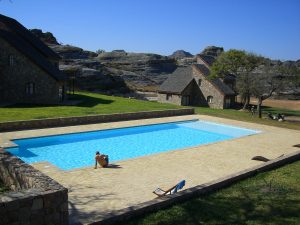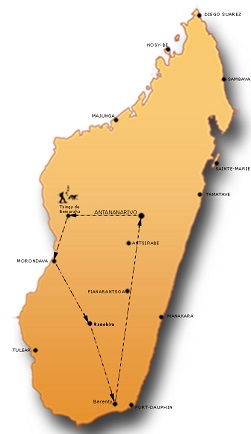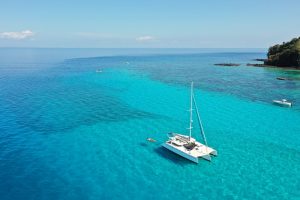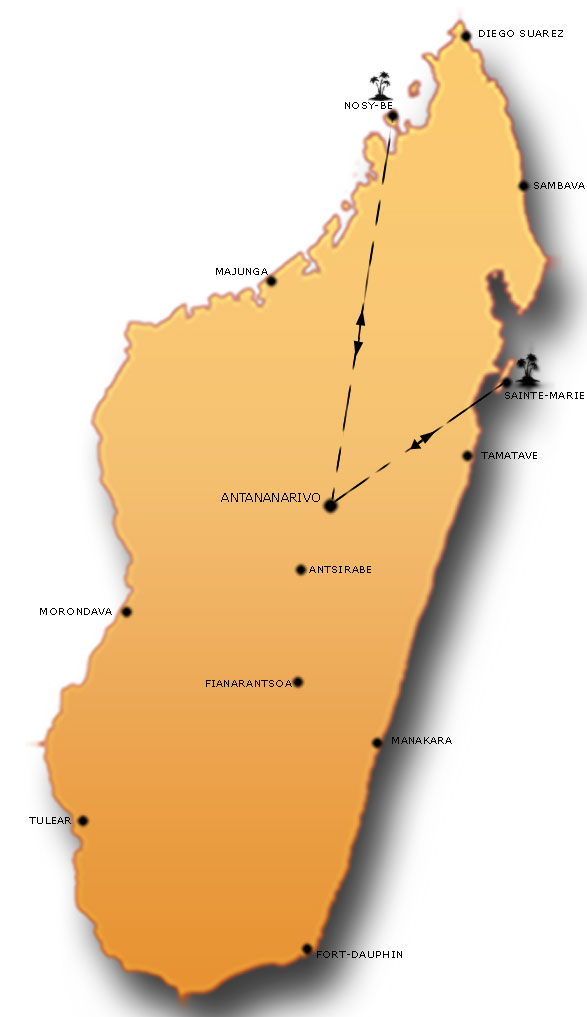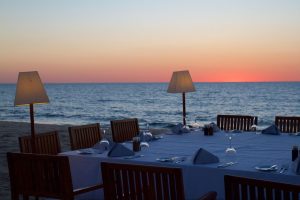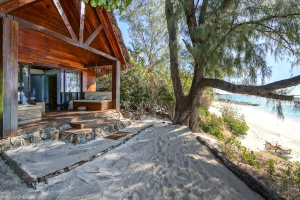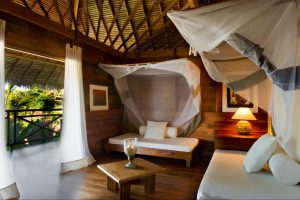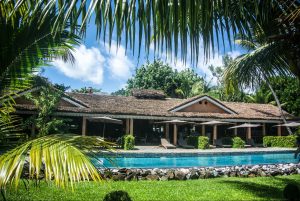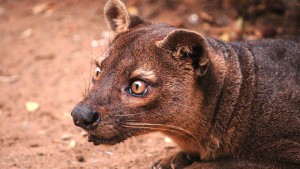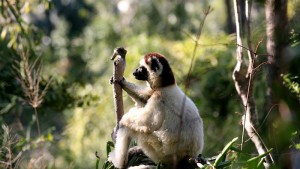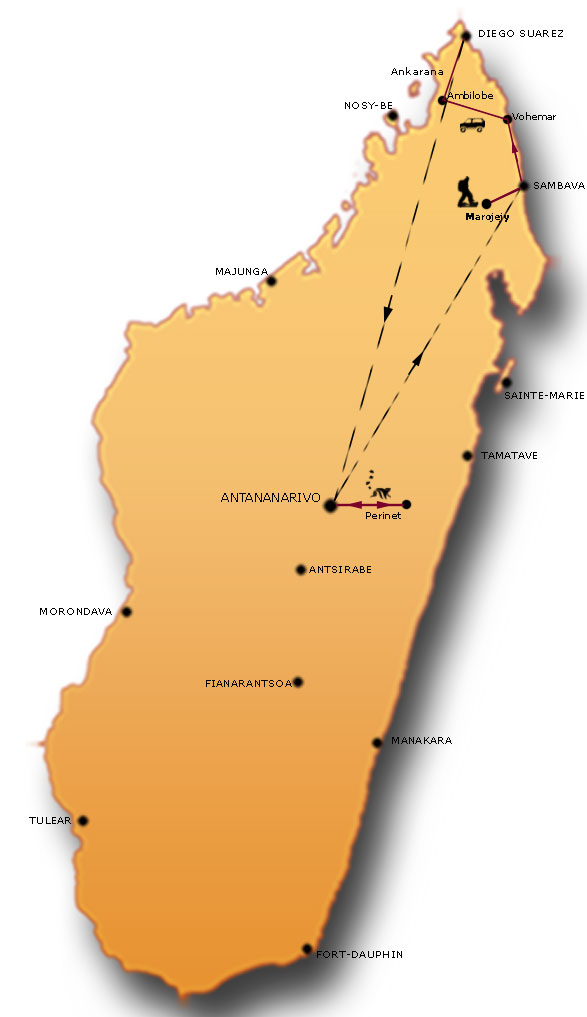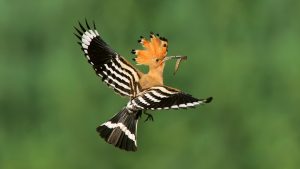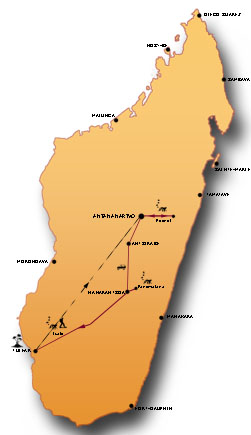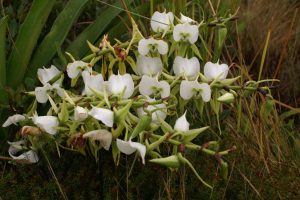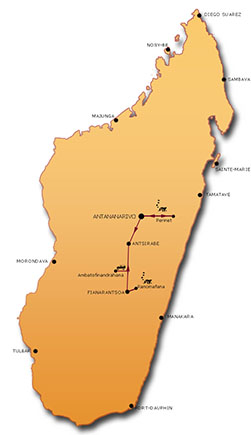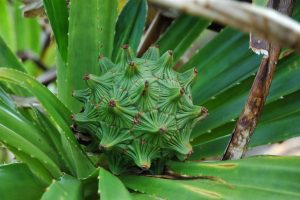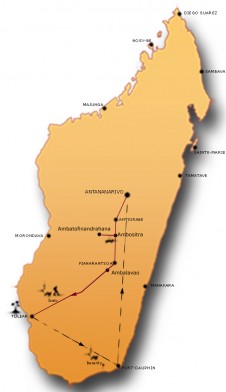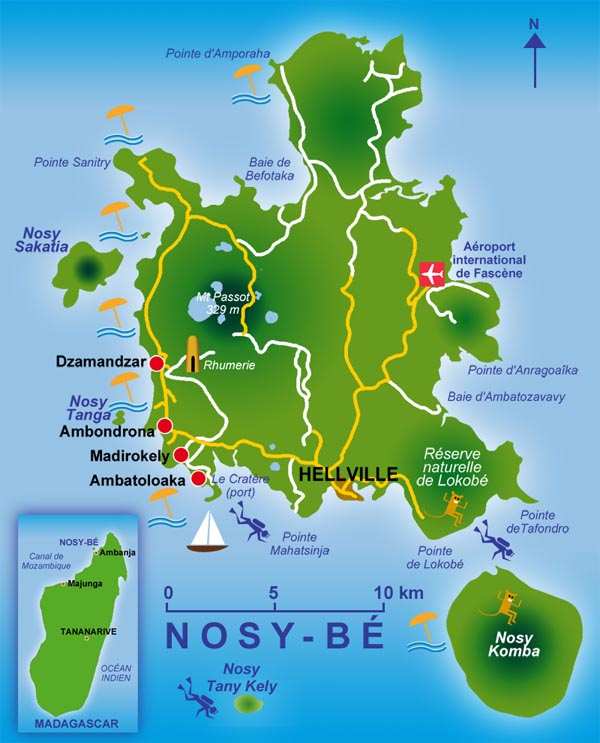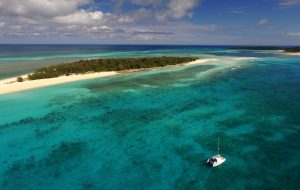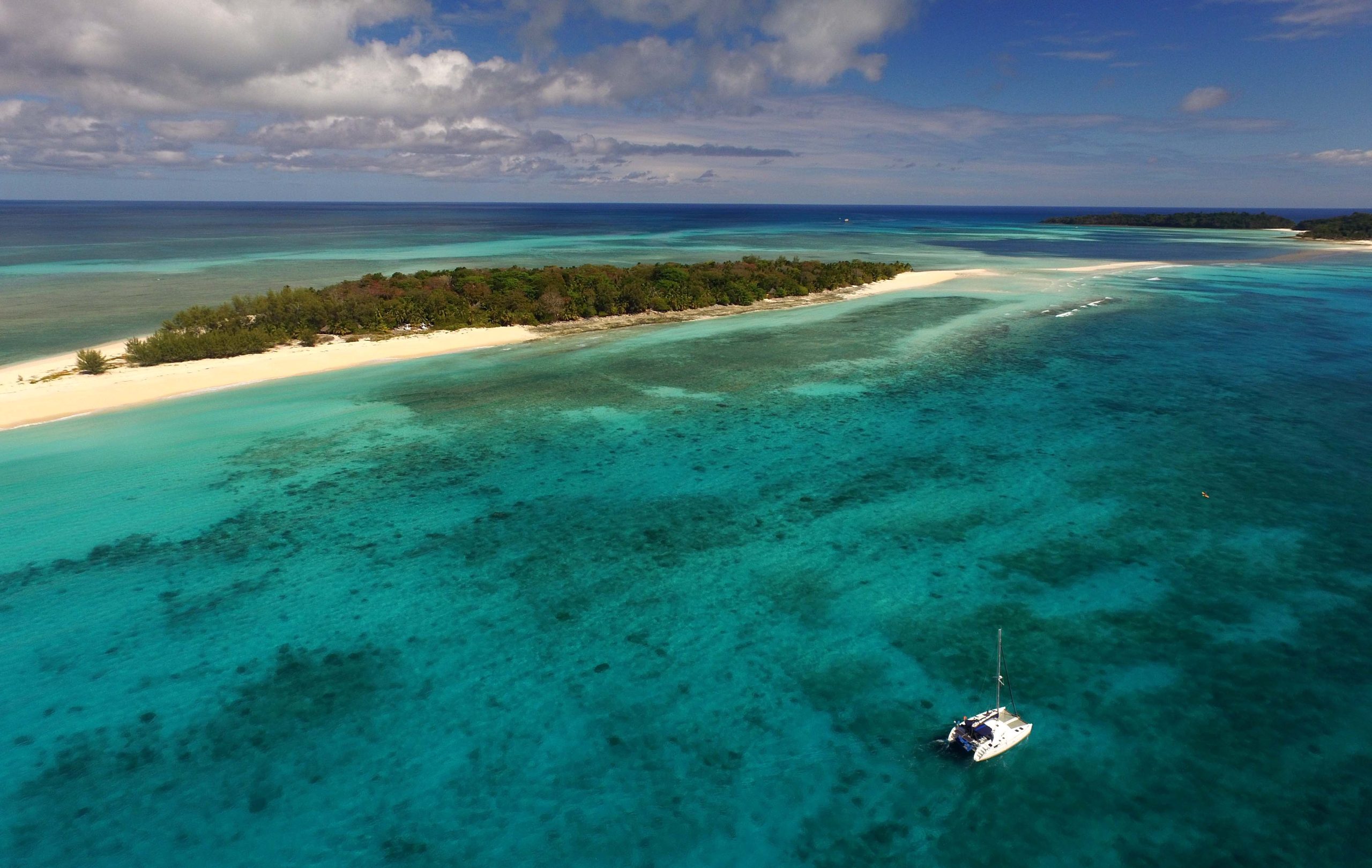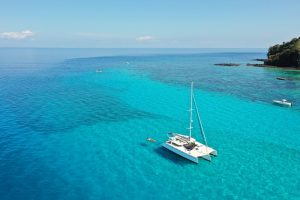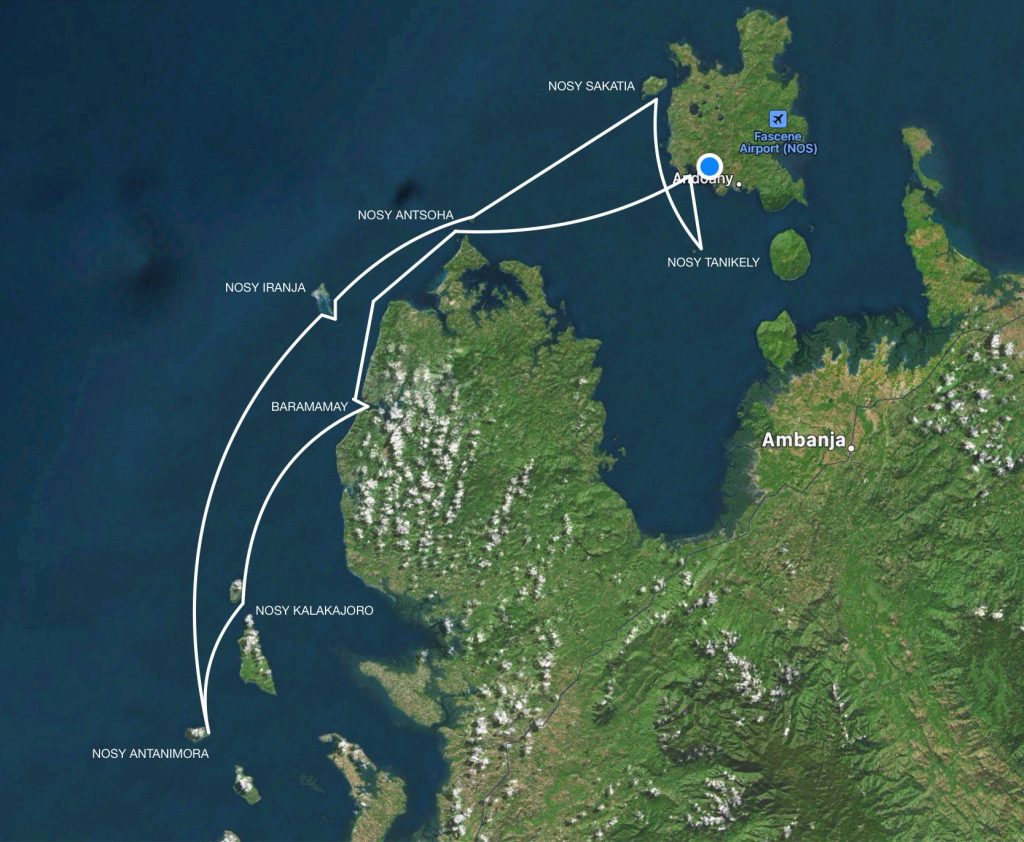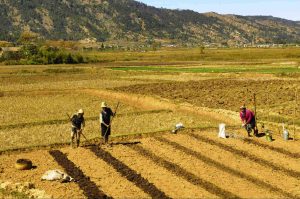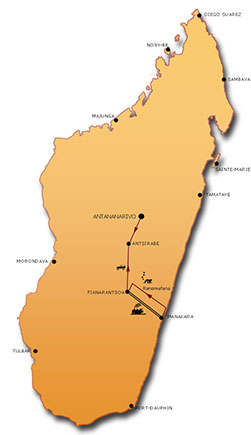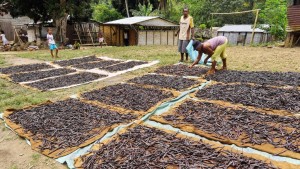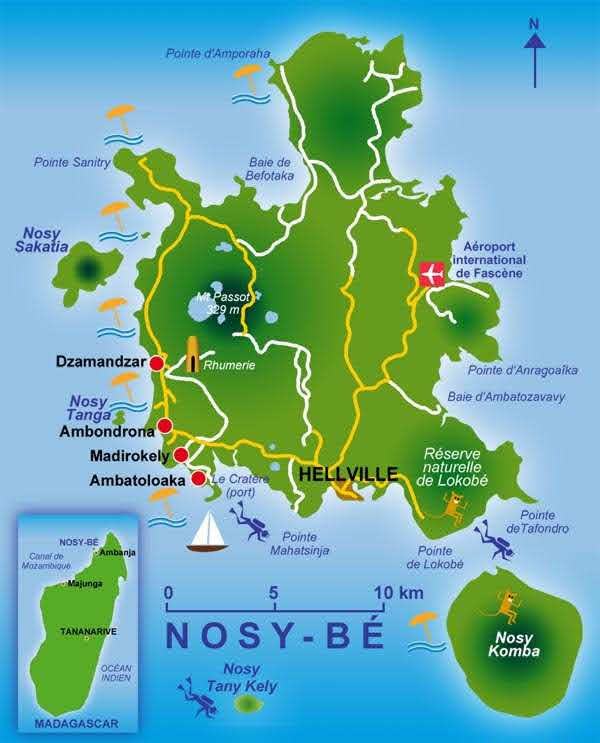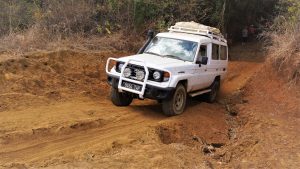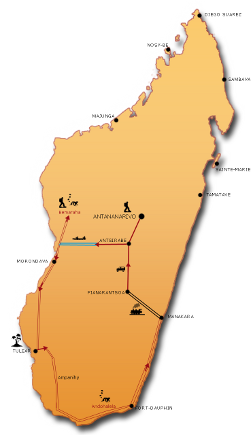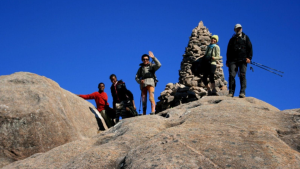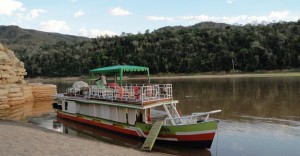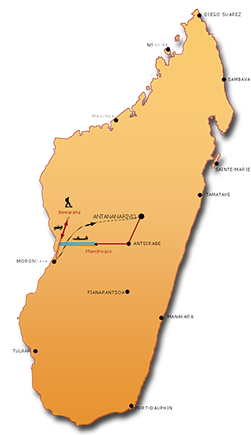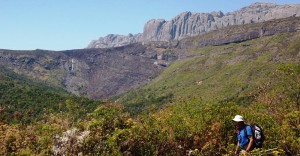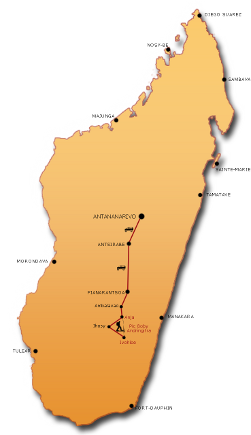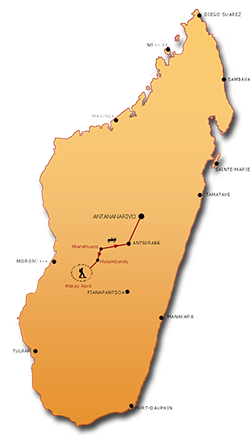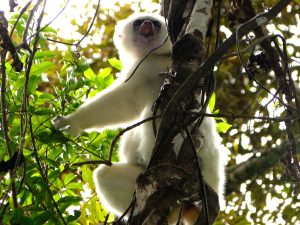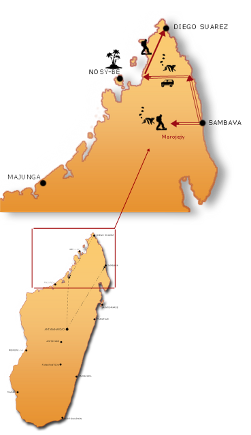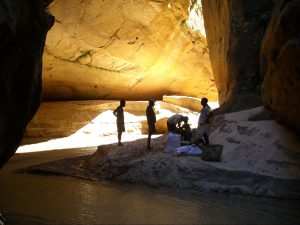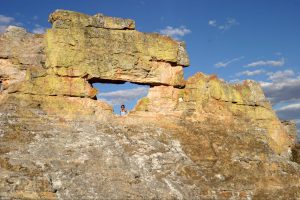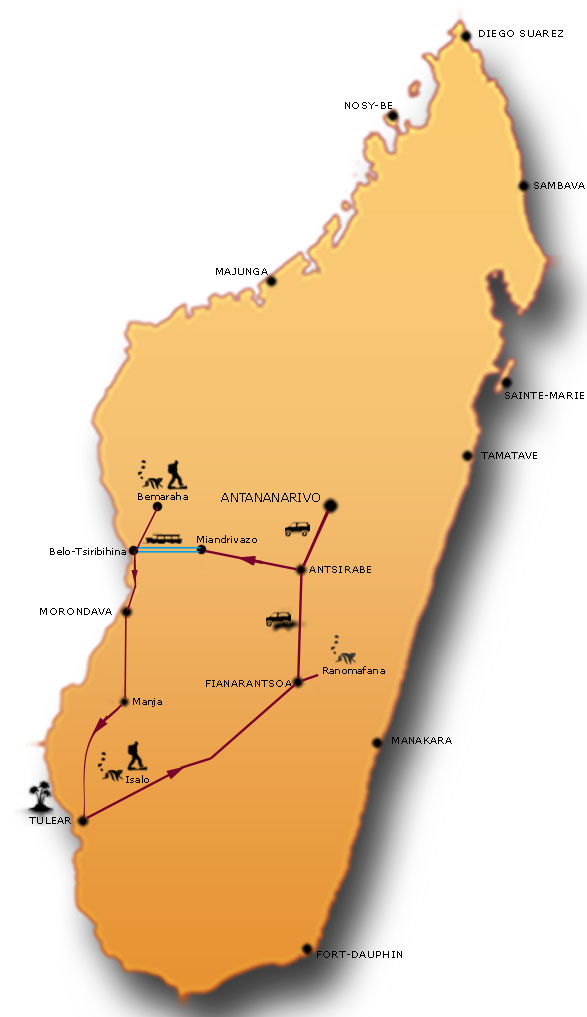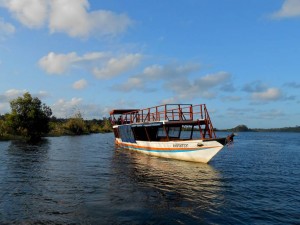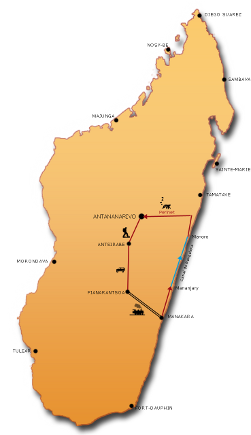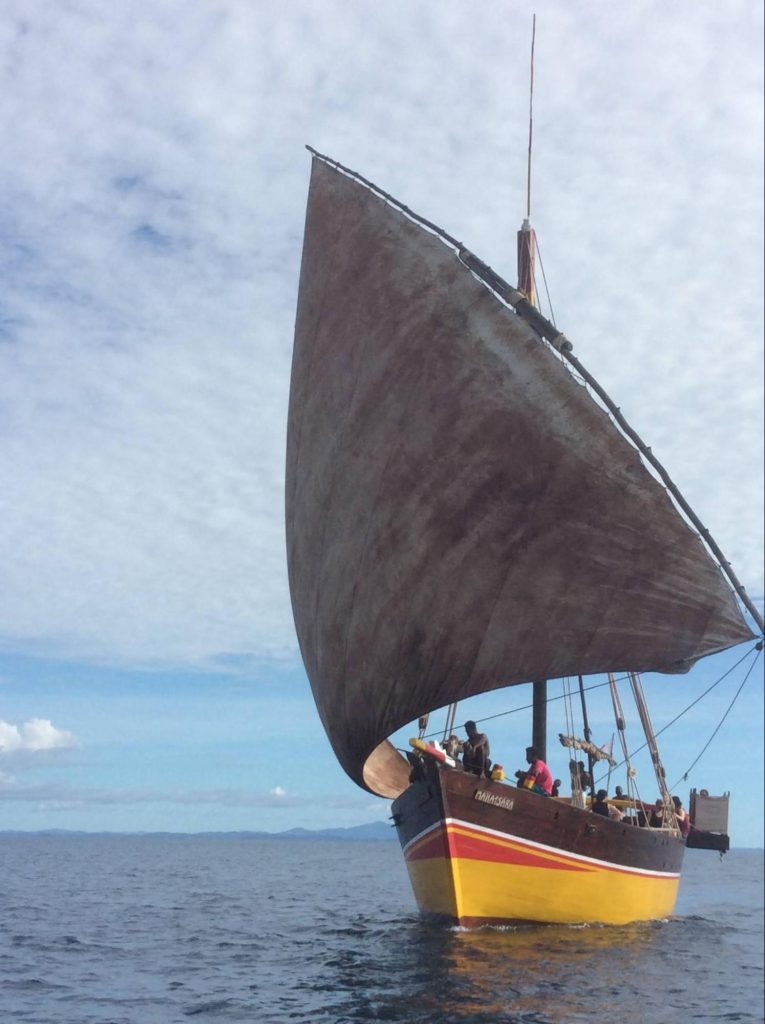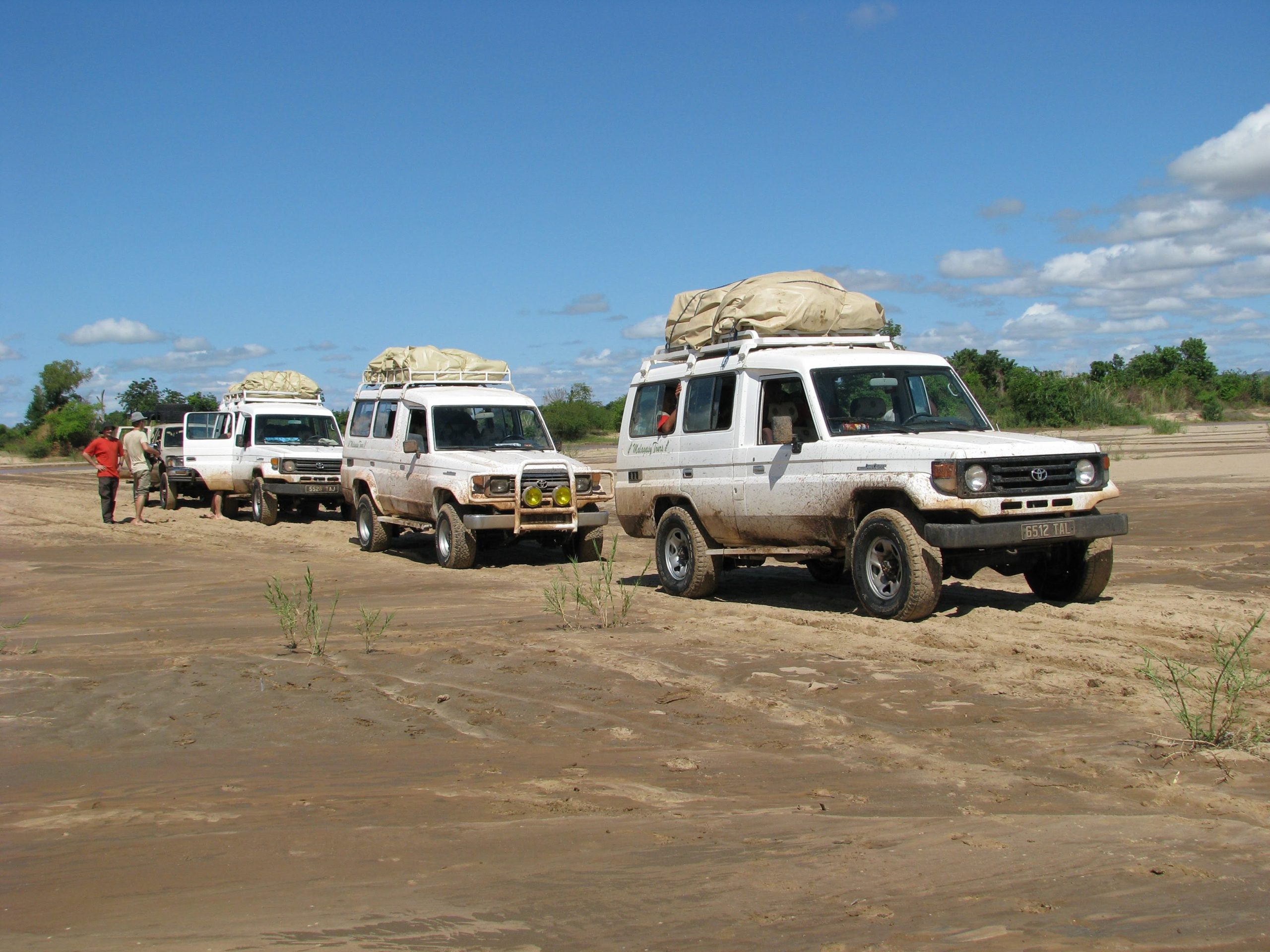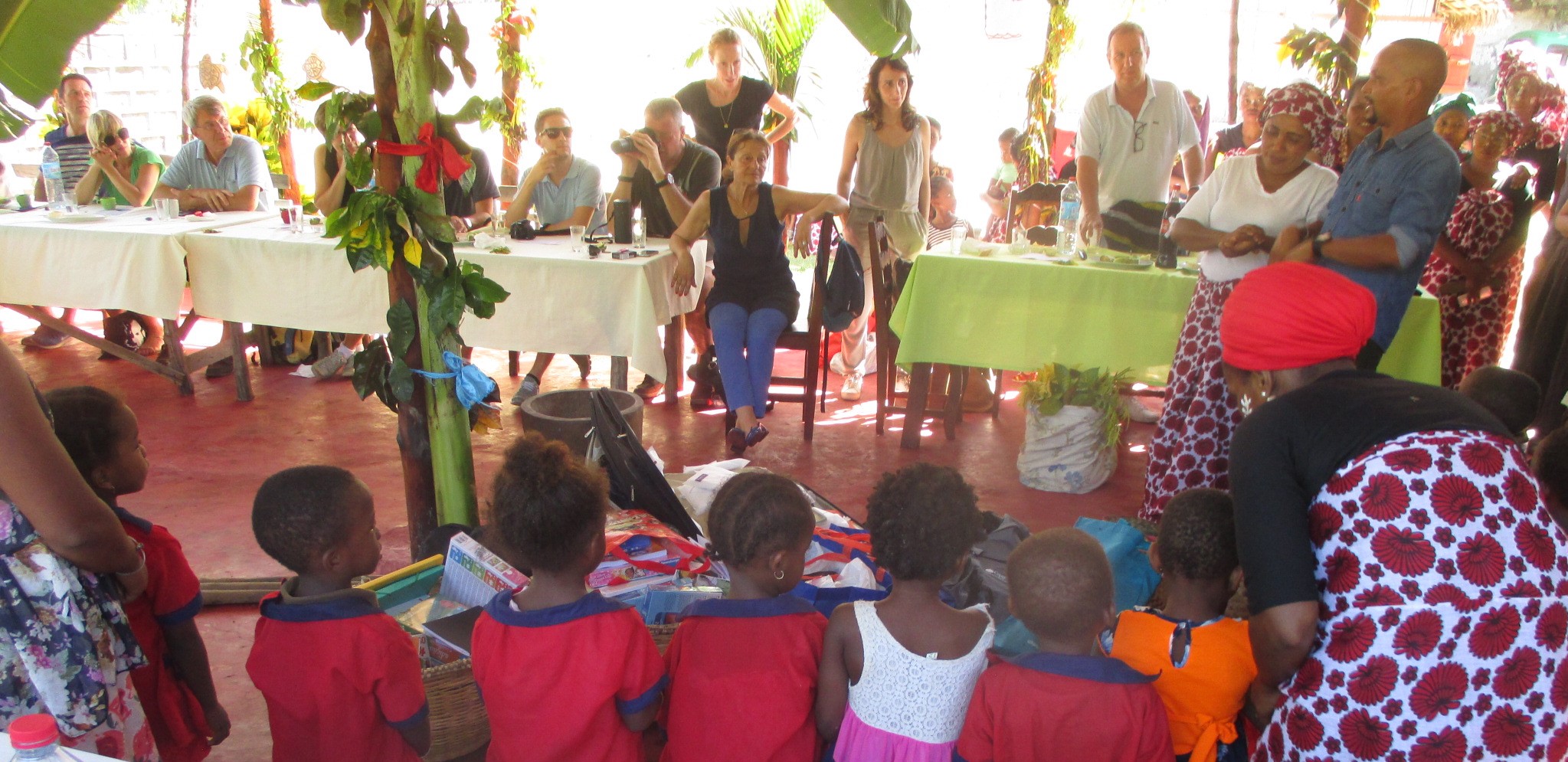
Thorny thickets typical sub- arid zone
There is no real rainy season, these being only occasional. The annual rainfall does not exceed 500 mm in some areas of the South West. If large trees are still encountered in places such as baobab and tamarind, vegetation forms a thorny thicket.
This one is more or less high, dominated by the largest species of the Didiereaceae family or of white latex Euphorbia, typical of the south. Among other remarkable elements, let us note the pachypodes of which some species can reach several meters high, recalling the baobabs, or Kalanchoe, some species are locally called “big ears” to translate the strange shape of their large thick leaves.
Along the major rivers, a gallery forest can grow and it will then dominated by the tamarind fruit which are appreciated by Lemur Catta. Flora and fauna of southern Madagascar are unique and if Didiéracées can recall some plants of the Mexican desert, the thorny thicket of southern Madagascar is unique by its appearance but also by the specific forms of life that it houses.
Deciduous forests in the dry floor and some parts of sub- arid zone
On the west coast, the dry season is marked and lasts several months between April-May and November-December. Natural forests are now rare but have a procession of very special trees. Most trees and shrubs lose their leaves during the dry season.
Forests on calcareous soils encountered into the “Tsingy” are somewhat reminiscent of the rain forests of the east coast, with large trees growing in more humid conditions. It is in these areas that are found particularly natural populations of Flamboyant tree endemic to Madagascar, which was exported around the world as an ornamental tree.
At medium altitudes between 800 m and 1 400 m, the forest floor is generally shallower and temperatures drop. We still encounter big trees but the forest is not as high, the canopy does not exceed 20 meters except in areas less exposed as in valley bottoms. The undergrowth is generally denser; the trees are covered with moss and lichens. The plants grow on plants, ferns, orchids and other epiphytes, which are not parasites, are using trees as support and are numerous. Bamboo and vines are more commonly encountered at medium altitudes. Ferns which prefer the wettest places in the tree are up to twenty meters high, terrestrial or epiphytic sometimes forming real bouquets on the branches of the tallest trees.
At higher altitudes, usually above 1800 m, the conditions are harder; the temperature drops at the same time that the differences between daytime and night-time temperatures are increasing. Soils are even less deep and the vegetation is more exposed to wind and sunshine. The forest is much lower; the trees may belong to the same species at low altitude but develop differently. They are often gnarled, stunted and bushy. Their leaves are waxy, small and sometimes reduced to the status of thorns. The vegetation at these altitudes is “sclerophyllous» and the species of the family Ericaceous are common.
Evergreen forests with wet and sub-humid floors
The east coast receives the clouds brought by the southern trade winds and those of storms in the hot season, from November -December to April-May. The dry season is very pronounced and sometimes lasts a month. Humid to sub-humid evergreen forests on the east coast and on the North West coast in Sambirano behind the massif of Tsaratanana. Each forest plot is of course special but overall changes in natural forests are found in the composition and structure depending on the altitude; the more the height is raised, the less the forest is high. At the heights superior to 2 000 m, the forest is sometimes replaced by a mountain’s thicket.
Rainforest on the east coast perfectly meets the images of «tropical ” forests. It is evergreen. Larger trees are encountered at low altitudes below 800 to 1 000 m depending of the places. Soils are deep, humidity is high and the forest floor is thick. The canopy is high, and these forests are home to the largest number of species of plants and animals. Just behind the shore, in some places a particular type of forest has grown on sandy soils: the coastal forest that is only represented by a few plots as near Fort Dauphin or the Masoala peninsula.
Thicket of mountain on the highest peaks
On some “roof” of the highest mountains at the top of Tsaratanana, Marojejy in Andringitra or in Andohahela, the forest is replaced by a thicket of mountain. These summits are extremely dry, climate and living conditions are the toughest. Few animals are found in the thickets of mountain. Accidental fires destroyed the natural vegetation of the summits of Tsaratanana and Andohahela but the thicket of Marojejy mountain is still intact. At over 2000 meters, shrubs, dwarf palms and unique orchids can be met.




